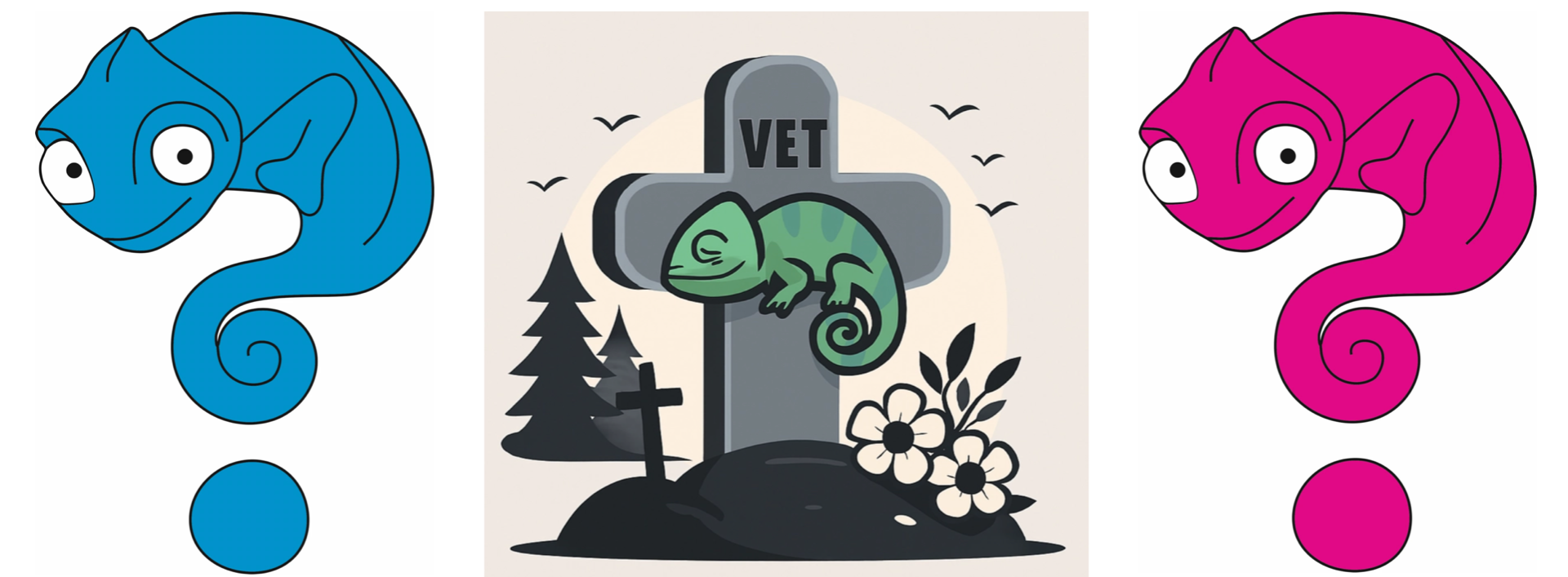Myth 2: "GO VET: The Blank Advice That Fails Chameleons"

More and more often, in online groups dedicated to chameleon care, a familiar pattern unfolds. A keeper posts a question, often about a health concern. Sometimes it is urgent, sometimes subtle. Within minutes, a flood of replies appears. Most of them say the same thing: "Go to the vet." "Find a vet." "Vet now." The impulse behind these comments is warmhearted, but the advice itself is not only redundant—it is counterproductive.
The average keeper already knows that veterinary care exists. They are not asking whether vets exist. They are asking for guidance. They are seeking someone to walk them through the dark corridor of stress, uncertainty, and sometimes impending death. Instead, they are overwhelmed by a wall of noise. The thread becomes a graveyard of empty echoes. The keeper, still desperate, may leave before a competent specialist arrives. This is not just unfortunate. It is dangerous.
Competent people are often busy. They may be in another time zone, on the other side of the globe, or simply offline. The window for intervention can close before expertise enters the room. And in that vacuum, the "Go vet" chorus drowns out the signal with static.
Now consider the structure of these groups. Some are built on educational systems, with certification as a prerequisite for moderators and admins. These groups tend to offer high-quality, boundary-aware advice. Others are run by self-appointed enthusiasts—well-meaning, perhaps, but often lacking the anatomical, pharmacological, and behavioral literacy required to guide a keeper through a crisis. In these spaces, advice ranges from misleading to lethal.
Certified specialists understand professional boundaries. They know when husbandry parameters can be adjusted and when a case requires diagnostics, bloodwork, or regulated substances such as antibiotics or hormones. They do not guess. They triage. They refer. They protect.
And yet, even the vet is not a guaranteed solution. Incompetent or poorly trained veterinarians—especially those unfamiliar with chameleon anatomy and physiology—can cause catastrophic harm. Cases abound. Hemipenes amputated instead of gently unplugged. Tails permanently damaged from nerve trauma during blood draws. Animals bled to death from excessive sampling. These are not rare anecdotes. They are documented failures of professional ethics and anatomical understanding.
In many regions, competent reptile vets are scarce. In the entire United States, only a handful are truly qualified to handle chameleons. In Europe, perhaps a few dozen. In other parts of the world, they are virtually absent. And even if one exists, the process of transport—handling, waiting, exposure to unfamiliar stimuli—can itself be fatal. Chameleons are fragile. Stress kills.
So let us retire the blank advice. "Go vet" is not a solution.
It is a placeholder. It is a deflection. Instead, advocate for certified moderators, structured educational systems, and anatomically literate guidance. Let the first reply be a question, not a command. Let it open a door, not slam one shut.
In the world of chameleons, silence is not golden. It is lethal. And noise without knowledge is no better.